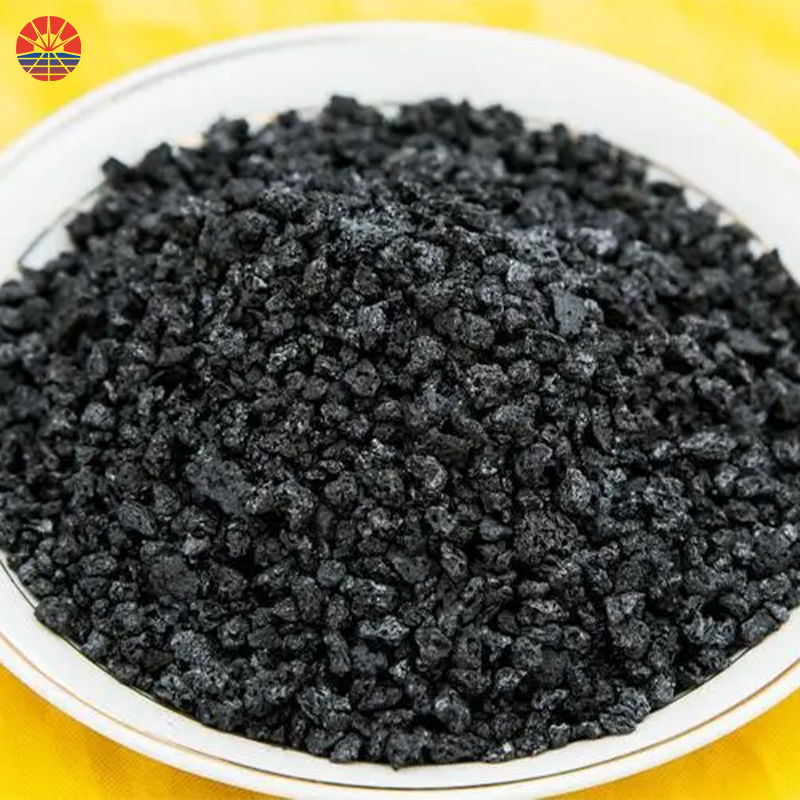Graphitized Petroleum Coke For Steel-making And Casting
Graphitized petroleum coke (GPC) is a specialized form of petroleum coke that has undergone graphitization to enhance its properties. It offers several advantages when used in steel production, particularly in electric arc furnaces (EAF) and ladle furnaces (LF). Here are the main advantages of using Graphitized petroleum coke in steelmaking:
High Carbon Content: GPC has a high carbon content, typically above 98%. This high carbon content makes it an excellent carbon additive for steel production. In electric arc furnaces, GPC is added as a carbon source to react with oxygen and remove impurities, facilitating the reduction of iron oxides into molten steel.
Superior Electrical Conductivity: Graphitized petroleum coke exhibits exceptional electrical conductivity due to its graphitic structure. During the steelmaking process, the electrodes made from GPC efficiently conduct electrical energy, generating the high temperatures needed to melt the raw materials and produce steel.
Low Impurity Levels: GPC is manufactured with strict control of impurities, ensuring that it has low levels of sulfur, nitrogen, and other elements. Low impurity levels are crucial in steelmaking, as impurities can negatively impact the quality of the final steel product.
Low Thermal Expansion: Graphitized petroleum coke has a low coefficient of thermal expansion, which means that it remains dimensionally stable under high temperatures. This characteristic is vital in the production of graphite electrodes, which must endure extreme heat without significant deformation.
Oxidation Resistance: GPC exhibits high resistance to oxidation, even at elevated temperatures. This property is essential for maintaining the integrity and durability of the graphite electrodes used in steelmaking processes, as they are continuously exposed to oxidizing environments.
Cost-Effectiveness: GPC is relatively cost-effective compared to other carbon additives used in steelmaking, such as anthracite coal or metallurgical coke. Its high carbon content and superior properties make it an efficient and economical choice for carbon addition in the steelmaking process.
Reduced Environmental Impact: The use of graphitized petroleum coke contributes to environmental sustainability in steel production. Its low sulfur content helps reduce sulfur dioxide emissions, contributing to improved air quality and mitigating environmental concerns.
Improved Steel Quality: By providing a high-quality carbon source, graphitized petroleum coke helps produce steel with consistent and desirable mechanical properties. It allows for better control over the steel composition and reduces the risk of defects in the final product.
In conclusion, using graphitized petroleum coke in steelmaking offers significant advantages, including high carbon content, superior electrical conductivity, low impurity levels, thermal stability, oxidation resistance, cost-effectiveness, and improved steel quality. These benefits contribute to more efficient and environmentally friendly steel production processes in electric arc furnaces and ladle furnaces.
Usage to use Graphitized petroleum coke in steel
Graphitized petroleum coke (GPC) is primarily used in the steel industry as a carbon additive in the production of high-quality steel. It serves as a key component in electric arc furnace (EAF) steelmaking and ladle furnace (LF) refining processes. Here's how GPC is used in steel production:
Electric Arc Furnace (EAF) Steelmaking:
GPC is added to the EAF as a carbon source to raise the carbon content of the steel. Steel producers carefully control the carbon levels to achieve the desired grade and properties of the final steel product.
When the EAF is charged with steel scrap and other raw materials, GPC is introduced to the steel bath. The electrical energy is then passed through the electrodes, including GPC-based electrodes, which generates intense heat to melt the scrap and reduce iron oxides in the charge.
The GPC-based electrodes also aid in stirring the molten steel, promoting homogeneity and ensuring uniform composition and properties.
Ladle Furnace (LF) Refining:
In the LF refining process, GPC can be added as a carbon source to adjust the carbon content and temperature of the steel before casting. This step helps to refine the steel further and remove impurities.
LF treatment with GPC can also help in desulfurization and deoxidation, leading to cleaner and higher-quality steel.
Continuous Casting:
GPC can be used in continuous casting applications to control the formation of inclusions and ensure the production of clean steel.
It helps to prevent nozzle clogging during the continuous casting process, enhancing the efficiency and quality of the steel casting operation.
Overall, the usage of graphitized petroleum coke in steel production is vital for controlling carbon content, promoting electrical conductivity, improving steel cleanliness, reducing impurities, and enhancing the overall quality of the steel. The properties of GPC, such as its high carbon content, electrical conductivity, and low impurity levels, make it a preferred carbon additive for steel producers seeking high-performance and clean steel products.












